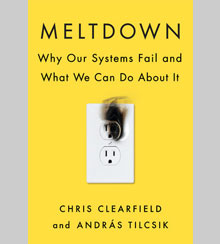by Theodore Kinni
Like most other jobs, crime doesn’t pay that well unless you’re the boss or indispensable to the boss. And you know the rule of thumb there: no one is indispensable. At least that’s the way Malcolm Mackay tells it in six interrelated noir novels, published at a gallop over four years by Mulholland Books in the United States and concluding in May with For Those Who Know the Ending.
“I don’t know if a career in crime is necessarily worse than any other, but it is more complicated,” Mackay explained to me in an email exchange.
Every issue that you face in a normal job exists there, too, but with the added complication of some good people wanting to put you in prison and other bad people wanting to take a hammer to your ankles. One thing I did want to get across is that working in the criminal industry doesn’t come with some incredibly glamorous lifestyle to compensate for the difficulties. It’s a grind filled with people looking to exploit you at every turn, and who will help and protect you only so long as it benefits them to do so.Mackay has been telling it this way since the first clipped sentence of his first novel, The Necessary Death of Lewis Winter: “It starts with a telephone call.” In this case, it’s a call that many gig workers have received at one time or other — a client has a full-time position to fill and is wondering whether the freelancer might be ready for a steady paycheck. It’s three more terse chapters before Mackay makes it clear that this freelancer, Calum MacLean, is a gunman, and the caller, John Young, is the chief operating officer of a fast-growing crime organization headed by Peter Jamieson.
“This might sound counterintuitive and a bit daft, but I wanted the opening of Lewis Winter to seem really ordinary,” Mackay told me.
I wanted Calum to seem as though he could have been any young man and to have the phone call that sets up the interview seem like any employer looking to hire a person. It establishes, I hope, that Calum is an unremarkable person, even if he does unthinkable things, and that the industry he works within can operate in unremarkable ways. I wanted to show the gap between law-abiding people and criminals like him is perhaps not as great as we assume.Mackay hails from Stornoway on the Isle of Lewis in the Outer Hebrides. But unlike Peter May, who made dramatic use of the sparsely populated, 130-mile-long archipelago in The Lewis Trilogy, Mackay chose to set the six Jamieson noirs in Glasgow, Scotland’s largest city, an eight-hour trek by ferry and car from his hometown.
“Perhaps it is an unconscious desire to escape my ordinary life here on Lewis and live in a world I don’t belong to, but one that is still entirely my own,” Mackay wrote in The Telegraph a few months before he won the Deanston Scottish Crime Book of the Year Award for the second book in the series, How a Gunman Says Goodbye. “I had an idea for a novel set in the dark space inhabited by urban underworld gangs. Glasgow felt like the right kind of place.”
In contrast to most tartan noirs, however, place plays a minimal role in Mackay’s books. The actual setting is what the 36-year-old author repeatedly characterizes as “the industry” — that is, the crime industry...Read the rest here






















